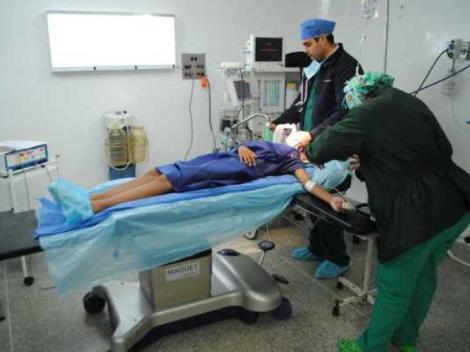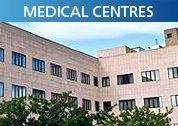
Specialized Centers
HOSPITAL CLÍNICA BENIDORM (HCB)
HOSPITAL CLÍNICO VISTAHERMOSA
HOSPITAL INTERNACIONAL MEDIMAR
Conventional or Open Inguinal Hernia Repair
Hernioplasty is the name given to surgical repair of a hernia in the abdominal wall of the groin, and is one of the most common complaints suffered by human beings. It can cause severe pain and other complications.
These hernias are divided into two different types, direct (congenital) and indirect (acquired), but they both appear in the groin area. A hernia occurs when an organ (generally the intestine) bulges out through a weak area or rupture of the abdominal wall, creating a bulge in the abdomen that can be very painful and cause other complications. During the repair, the protruding tissue is pushed inside and the defect in the muscle wall of the groin is repaired.
The only definitive treatment of an inguinal hernia is surgery. This surgery can be conventional or laparoscopic and always involves the insertion of a strengthening mesh to reduce the risk of recurrence and enable the patient to get back to work as quickly as possible.
The decision whether to opt for open or conventional surgery is up to the surgeon either before or during the operation. This decision is made according to the conditions and safety of the patient and the size of the hernia.
Benefits of the operation
The "open" or conventional technique can be performed under local, regional or general anaesthetic, which is a very important factor for patients with high operative risk, who have had problems with general anaesthesia or who do not want spinal anaesthesia.
Medical-technical description
In "open" or conventional surgery, the surgeon makes an incision close to the hernia.
- The surgeon finds the hernia and separates it from the tissues around it. The hernia sac is then removed or the intestines are moved back into the abdominal cavity.
- The surgeon then sutures the weak abdominal muscles together. A piece of surgical mesh is often sewn into the site to strengthen the abdominal wall. This corrects the weakness of the abdominal wall.
About the operation
Open or conventional surgery is performed from outside the body with a 5-10 cm incision in the groin or the site of the hernia. An incision is made through the skin and subcutaneous fat to give the surgeon access to the defect. The surgeon may opt to use a small piece of surgical mesh to correct the defect or close the hole.
This technique is generally performed under local anaesthesia and sedation; however it can be done under spinal or general anaesthetic. The operation usually takes between 30 and 45 minutes. Patients generally stay in the clinic for between eight and 24 hours.
Before the operation
- You will have a blood test, medical examination, chest X-ray and electrocardiogram.
- Your groin area will be shaved.
- You must not eat or drink for 6 hours before your operation.
- You must stop taking drugs such as aspirin, anticoagulants, anti-inflammatory agents and vitamin E, one week before the surgery.
- You must remove all metal objects during the operation (rings, bracelets, earrings, body piercings, etc).
Post-operative care
- After the surgery, you will be taken to the recovery room where you will be kept under observation for one or two hours until you are fully awake.
- You will be able to walk the following day, and a few days later you will be able to lead a completely normal life.
- Strenuous activities are not recommended.
- Try not to catch a cold so you do not cough.
- The stitches will be removed one week after the operation.
- If you do sports, you should not make efforts until three weeks after the operation, but walking or gentle jogging are allowed.



